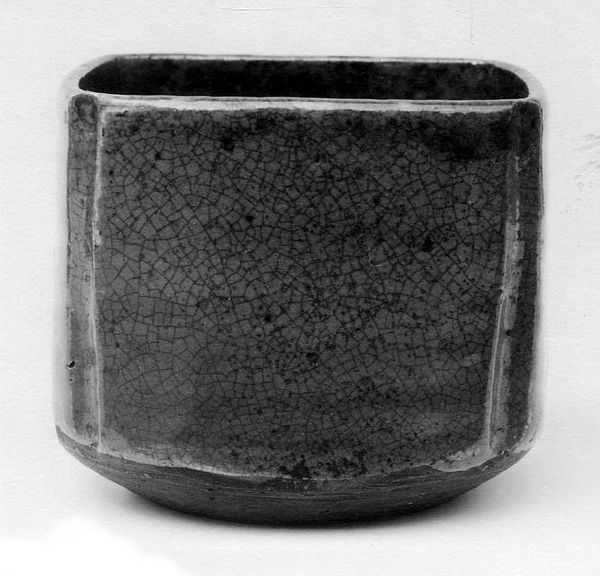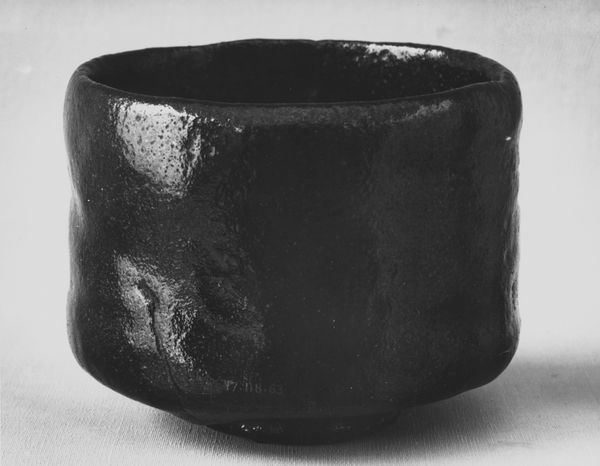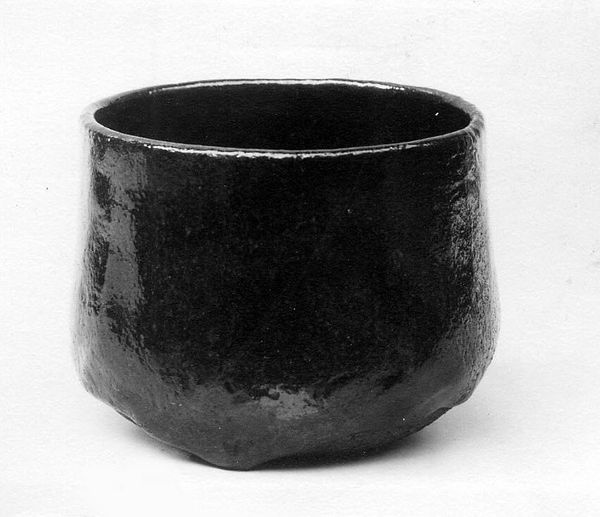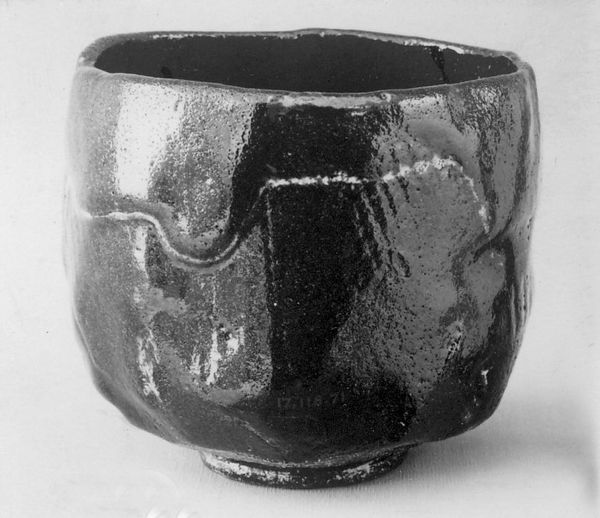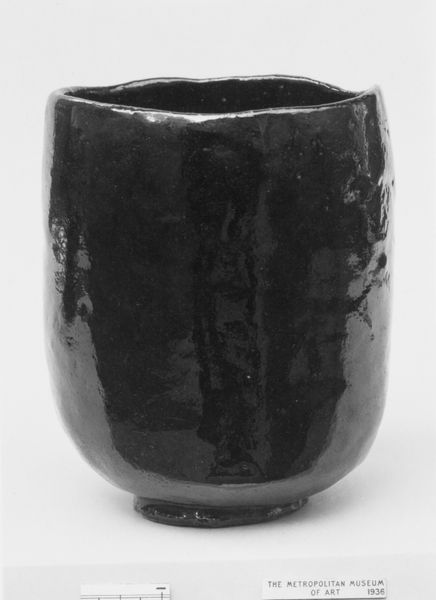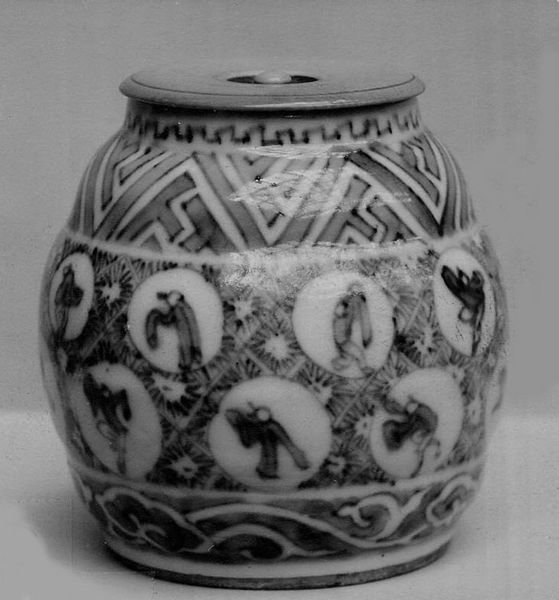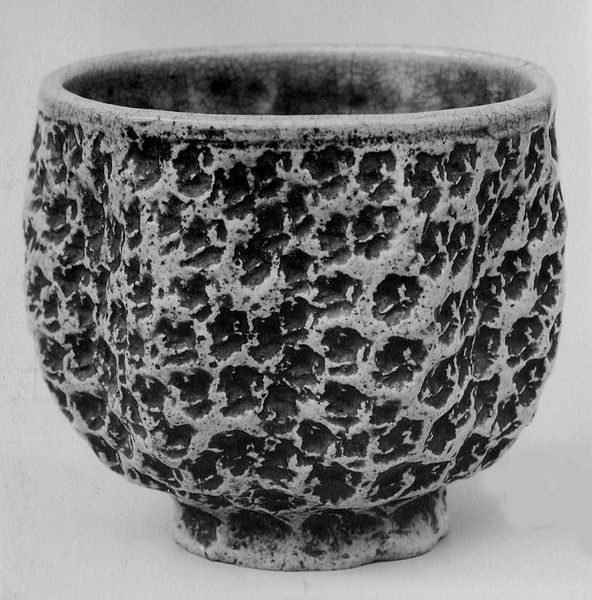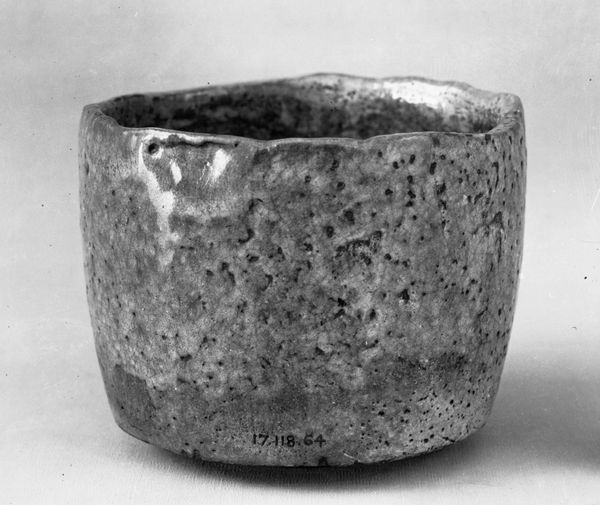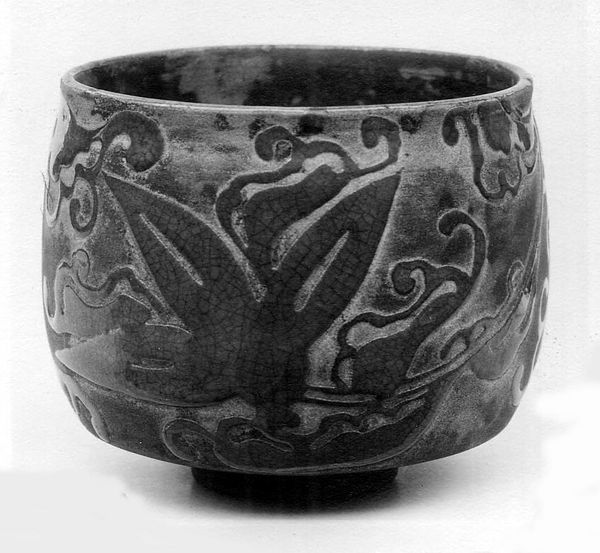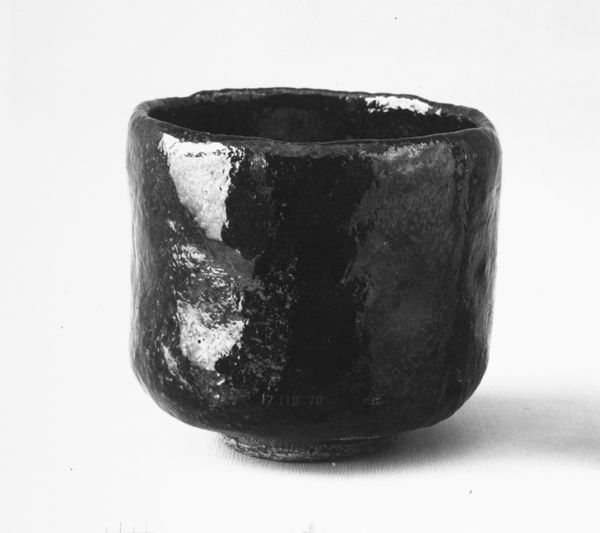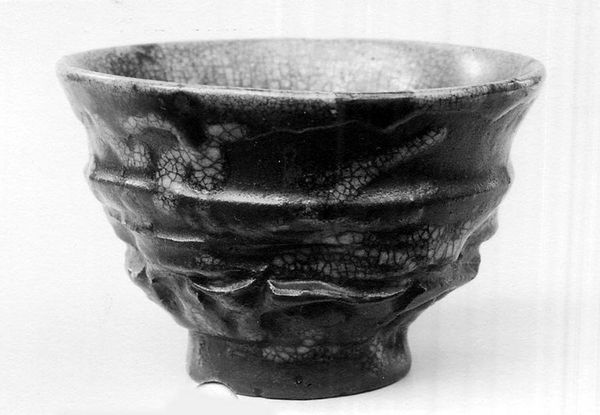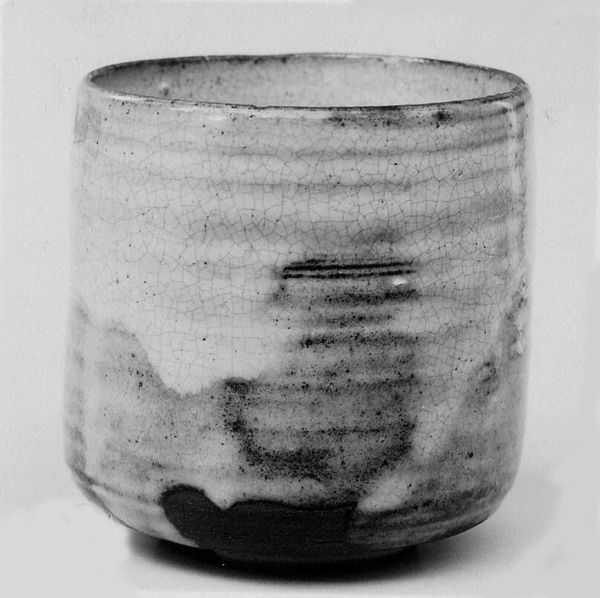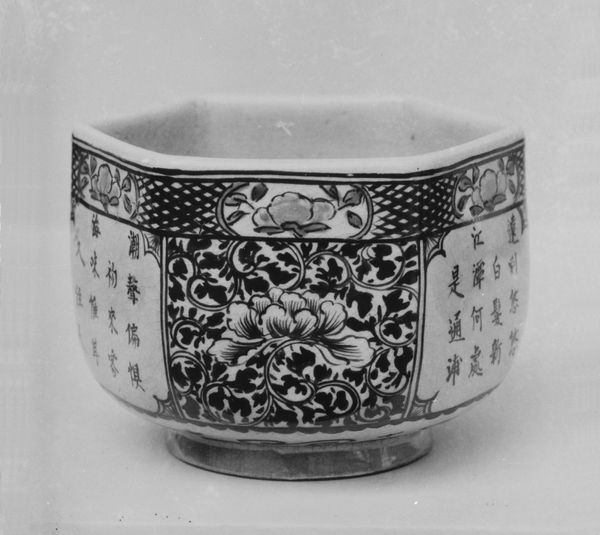
ceramic
#
asian-art
#
ceramic
Dimensions: H. 2 1/8 in. (5.4 cm); Diam. 2 3/4 in. (7 cm)
Copyright: Public Domain
Editor: Here we have an 18th-century ceramic incense burner, created by Kinkozan, and currently residing at the Met. It’s intriguing how such a seemingly simple object displays such intricate patterns, but there is a lack of brightness or variety. How do you interpret this work? Curator: This piece prompts me to think about ritual and domestic space in 18th-century Japan. Incense wasn't just about fragrance; it played a vital role in spiritual practice and social custom. Who might have owned this piece, and what power structures were they part of? Editor: That's a great question! It looks like it might have been quite common given the patterns used. Curator: Precisely. The repetitive geometric designs coupled with floral motifs likely symbolize a merging of spiritual and secular life, where societal order is reflected in intimate rituals. Do you think this speaks to control? The restrictions it may pose on individuals of the time? Editor: Hmm, that's a point. The honeycomb pattern could represent a controlled social structure, each cell representing a household or individual within a larger societal framework. But, that may not be intentional or correct. Curator: Absolutely. And what about the function of the burner? Incense smoke rises, symbolizing prayers or aspirations ascending. Was this vessel used for personal reflection or communal ceremony, influencing its reading differently? Editor: I'm leaning toward personal reflection given the color, or lack thereof! Thanks, that adds a layer of context that enriches the piece, doesn't it? Curator: Indeed. Seeing beyond aesthetics and function reveals the dynamic relationship between art, individual agency, and broader historical currents.
Comments
No comments
Be the first to comment and join the conversation on the ultimate creative platform.
